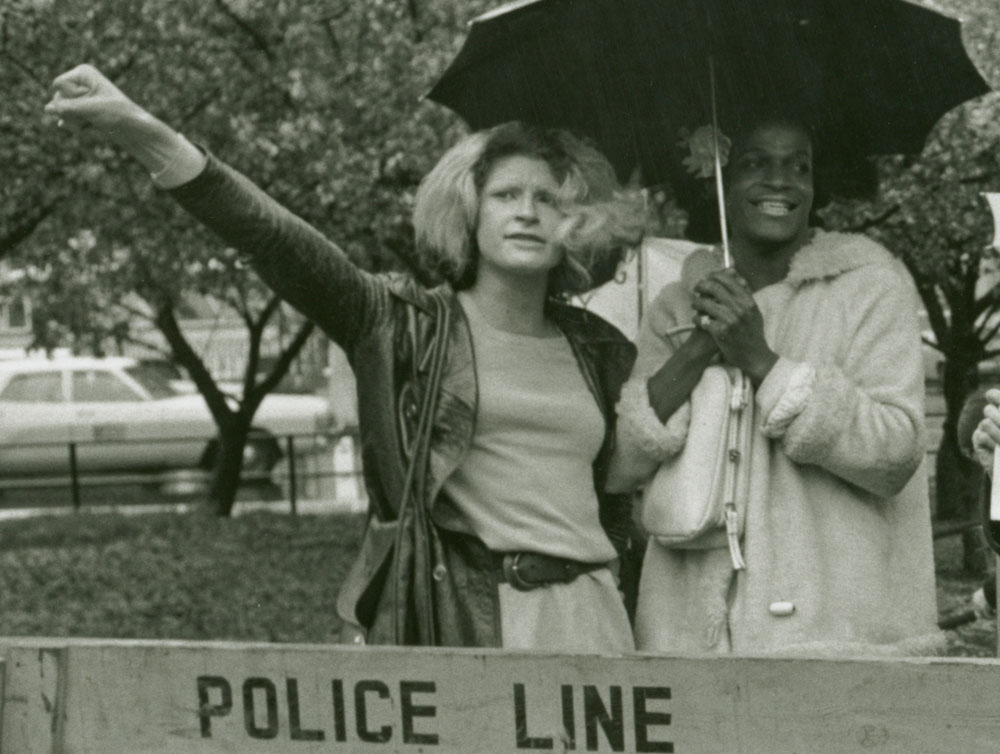
March 29, 2019; New York Times
The first week in June is known to many as Pride Week, when LGBTQ people celebrate their identities and achievements and highlight their ongoing fight for equal rights and recognition. This year, on the 50th anniversary of the Stonewall Riots in the Greenwich Village neighborhood of lower Manhattan, the city of New York revealed that it will erect a statue of Marsha P. Johnson and Sylvia Rivera, two major figures in the LGBTQ movement who played significant roles in the uprising.
There is already a monument to Stonewall in Greenwich Village, but it depicts four people, none of whom are trans, all of whom are painted white. New York City First Lady Chirlane McCray acknowledged how important it is to reverse the whitewashing of LGBTQ history, in the city and everywhere else.
Johnson and Rivera were pivotal figures in the community. In addition to being part of the “vanguard” that resisted police in the 1969 uprising, they formed a support group for young people whose families had rejected them called Street Transvestite Action Revolutionaries, or STAR. STAR ran the first LGBTQ shelter in North America, according to the Global Network for Sex Work Projects. The Root’s Anne Branigin described Johnson as “the Rosa Parks of the LGBT movement.”
Rivera and Johnson described themselves as revolutionaries. Workers World quotes Rivera saying,
I was a radical, a revolutionist. I am still a revolutionist…I’m glad I was in the Stonewall Riot. I remember when someone threw a Molotov cocktail, I thought, “My god, the revolution is here. The revolution is finally here!” I always believed that we would have a fightback. I just knew that we would fight back. I just didn’t know it would be that night. I am proud of myself as being there that night. If I had lost that moment, I would have been kinda hurt because that’s when I saw the world change for me and my people. Of course, we still got a long way ahead of us.
Rivera’s work continues with the organization that bears her name, the Sylvia Rivera Law Project.
Sign up for our free newsletters
Subscribe to NPQ's newsletters to have our top stories delivered directly to your inbox.
By signing up, you agree to our privacy policy and terms of use, and to receive messages from NPQ and our partners.
The telling of Johnson’s and Rivera’s stories, and the story of the LGBTQ rights movement in general, is complicated. Tensions have risen around what stories are told, and by whom. For years, the leadership role of women of color and trans people at Stonewall was erased. “For so long, the role that people like Marsha played was dismissed,” says Marisa Richmond, a trans scholar at Middle Tennessee State University. Many see the planned statue as a gesture toward reversing that erasure.
Others say that the full history is still not acknowledged. Reina Gossett and Sasha Wortzel, organizers and filmmakers whose work focuses on LGBTQ identities, say that white filmmaker David France stole their research material for a movie about Marsha Johnson and got funding to make his film before they could finish theirs. And in a New York Times article this week, LGBTQ activists in smaller cities say the movement history as a whole has overlooked their existence.
Gene Dawson, who started going out in drag in 1954, said, “We had queens that stuck up for everything, too. They don’t give St. Louis credit for anything. They just assume we’re all farmers 10 or 20 years behind everyone else. We were never behind anyone, especially the gay people.”
Mahdia Lynn, director of Masjid al-Rabia, a women-centered, LGBTQ-affirming mosque in Chicago, said, “It’s time to move beyond, ‘we exist.’” Her mosque arranged a wedding for two incarcerated gay Muslims in South . She adds, “The trouble comes at the level of institutions, and the level of power.”
NPQ’s Tiny Spark podcast recently examined the role the nonprofit sector has played in making an LGBTQ presence more acceptable in dominant spaces—for example, by developing a laser focus on marriage equality, which implies an acceptance of dominant culture norms, rather than a radical reimagining of equality and support.
Branigin acknowledges that Johnson and Rivera were aware of these tendencies of the gay rights movement to exclude transgender people, especially those of color, or otherwise try to make the movement seem more acceptable to “mainstream” (i.e., white and Christian) society—and that they fought these tendencies back in the 1970s.—Erin Rubin











